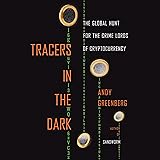The financial markets have exhibited remarkable resilience recently, defying conventional wisdom and navigating a landscape fraught with geopolitical tensions and aggressive monetary policy shifts. Many investors find themselves caught between skepticism and FOMO, questioning the sustainability of the current rally. Against this backdrop, renowned market strategist Tom Lee presents a compelling, contrarian perspective that redefines the narrative around the ongoing financial expansion and the burgeoning crypto bull market.
In the accompanying video, Lee unpacks why widespread disbelief is not a harbinger of doom but rather a powerful propellant for continued growth. He argues that this “hated rally” signals that we are still in the early innings of a new financial cycle, far from a late-stage bubble. This perspective is built upon a methodical deconstruction of common bearish arguments, revealing underlying strengths and emerging opportunities that most analysts seem to overlook.
The "Hated Rally" and Unwavering Market Resilience
Investor sentiment often operates with a significant bias, viewing market bounces with suspicion, attributing them to “dumb money.” This ingrained skepticism, as Tom Lee highlights, often prevents individuals from participating in significant uptrends. The current market cycle is a prime example, with many rage-selling during downturns only to miss the swift recoveries that followed.
Challenging Conventional Wisdom
The market’s rapid recovery and subsequent gains have created a phenomenon known as the “hated rally.” People who sold off earlier, perhaps influenced by recessionary fears or economic forecasts, found themselves unable to redeploy cash quickly enough. This missed opportunity contributes to a pervasive sense of distrust, further fueling the skepticism that Tom Lee identifies as a bullish indicator. Iconic examples like Palantir and Tesla, once dismissed as mere “retail stocks,” underscore how early recognition often comes from outside the traditional institutional consensus.
Surviving Economic "Kill Shots"
The strength of the current market cycle is underscored by its ability to absorb a series of economic shocks that historically would have triggered bear markets or even economic collapse. Tom Lee identifies no fewer than six significant “kill shots” that the market has endured:
- COVID-19 Pandemic: The initial global shutdown and uncertainty.
- Bullwhip Effect: Supply chain disruptions and inventory imbalances.
- Fastest Inflation Cycle in History: Unprecedented price surges.
- Fastest Fed Hikes in History: Aggressive interest rate increases to combat inflation.
- Trump Tariff Shock: Trade tensions and their economic fallout.
- Geopolitical Shocks: Such as the hypothetical (but discussed in the video) US bombing of Iranian nuclear sites.
Despite these monumental challenges, the market not only held its ground but also saw corporate earnings continue to grow. This resilience suggests a fundamental robustness, rather than fragility, at the core of the economy.
Decoding Key Economic Indicators
While many focus on headline figures, a deeper dive into specific economic data points reveals a picture of underlying strength and untapped potential. Tom Lee’s analysis points to several indicators that contradict the widespread narrative of an overvalued or fragile market.
S&P 500 Valuations Beyond the Surface
Critics often point to high valuations in the S&P 500 as evidence of a bubble. However, Tom Lee emphasizes the importance of looking at the equal-weight price-to-earnings (P/E) ratio. This metric provides a more balanced view by preventing a few mega-cap tech stocks from disproportionately skewing the average. Currently, the S&P 500 equal-weight P/E ratio stands at 25.9 times, which is only slightly above its six-year average of 16.3 times. This suggests that the broader market, beyond a select few names, is not excessively valued, indicating room for further expansion across various sectors.
The Bullish Signal of Pervasive Caution (ISM Manufacturing)
Another counter-intuitive indicator is the ISM manufacturing index, which has remained below 50 for a record 28 consecutive months—the longest such stretch since 1950. While typically seen as a sign of economic contraction, Lee interprets this pervasive business caution as a bullish signal. It suggests that businesses are operating with prudence, not exuberance, which is precisely what you want to see before a cycle peak. This widespread hesitation implies a significant amount of latent demand and investment waiting to be unleashed once confidence fully returns, acting like a coiled spring.
The Unlocking Potential of Mortgage Spreads
The housing market, a critical component of the economy, is currently hampered by unusually wide mortgage spreads. Historically, a 30-year mortgage rate has been about 160 basis points (1.6%) above the 10-year Treasury yield. With the 10-year at 4.2%, a 30-year mortgage should theoretically be around 5.8%, yet it often hovers near 7%. This excess spread, currently at 50 to 60-year highs, is due to various factors, including lenders’ concerns about prepayment velocity and uncertainty around collateral value. Tom Lee anticipates that as the Federal Reserve eventually adopts a more dovish stance and begins cutting rates, these spreads will likely narrow dramatically. Such a shift could trigger an immense mortgage refinancing boom and a robust housing recovery, injecting trillions of dollars of liquidity back into consumers’ pockets and fueling economic activity.
AI as a Supercycle, Not a Bubble
The current market rally is frequently labeled an “AI-driven bubble,” implying a narrow focus on a few technology giants. While AI is undoubtedly a dominant theme, Tom Lee asserts that this thematic leadership is a characteristic of significant economic cycles, not a flaw. AI represents a long supercycle that will diffuse profits across numerous industries.
Historical Parallels of Thematic Drivers
Throughout economic history, major cycles have always been driven by powerful, transformative themes. The 1980s, for instance, saw the retail sector flourish for two decades, fueled by demographics like the entry of baby boomers and women into the workforce. Similarly, the internet boom was a singular theme centered on building digital infrastructure. AI is merely the latest iteration of such a foundational thematic driver. While a few companies might lead initially, the benefits of AI spending will inevitably spread, creating a fertile environment for stock picking and growth across diverse sectors, including utilities, financials, and industrials.
The Evolving Labor Market
The advent of AI is also profoundly impacting the labor market. While the overall economy and stock market appear robust, the job market faces significant shifts. Tom Lee observes a softer labor market, with companies exhibiting less “hoarding” of employees, leading to reduced pricing power. This trend is exacerbated by a huge mismatch between available jobs and worker skills. AI is creating future roles that many are not yet equipped to fill, and a massive shortage of trade workers is also evident. This non-linear career landscape means that while AI is a massive economic boon, it also necessitates significant adjustments in education and workforce development to avoid widening skill gaps.
Ethereum: The Next Frontier of the Crypto Bull Market
Beyond traditional equities, Tom Lee identifies cryptocurrency, and specifically Ethereum, as one of the most significant investment opportunities of the coming decade, destined to become a major driver of the ongoing crypto bull market. This conviction stems from a clear generational divide in adoption and accelerated institutional integration.
A Generational Shift Towards Digital Assets
Surveys consistently show a stark contrast in crypto adoption across age groups. While approximately 75% of older investors still own no crypto, around 50% of individuals under the age of 30 actively own digital assets. This generational divide is critical, as history demonstrates that people in their 20s and 30s are typically the drivers of future change and investment trends. As this demographic gains more economic power, their preferred asset classes will inevitably gain prominence.
Stablecoins, Staking, and Institutional Adoption
Ethereum’s utility extends far beyond mere speculation. It is the dominant platform for stablecoins, hosting 60% of their total volume. With stablecoins projected to grow exponentially from $250 billion to potentially $4 trillion, this represents an enormous and sustained demand for Ethereum. Furthermore, Ethereum offers a native yield of 3% through staking. This proof-of-stake model allows ETH holders to earn rewards by validating transactions. For instance, Bitmine Immersion Technologies, as mentioned, aims to stake 5% of the entire Ethereum network, potentially generating over $200 million in annual net income.
Wall Street’s accelerating integration of blockchain technology further validates Ethereum’s potential. Initiatives like the SEC’s “Project Crypto” and the expected FIT21 Act signal official recognition and embrace of blockchain for making financial operations faster and more efficient. Much like the dollar decoupling from gold in 1971 spurred innovation on Wall Street, the current embrace of blockchain technology is poised to create a new era of financial innovation. Ethereum, with its robust smart contract platform (EVMs), is the chosen infrastructure for many of these advancements, including Robinhood’s tokenized products.
Ethereum’s Potential to Reshape Finance
With a current fully diluted network value of approximately $480 billion and a slower inflation rate than Bitcoin (growing at about 1% annually, roughly one-third of Bitcoin’s inflation rate), Ethereum exhibits strong fundamentals. Tom Lee predicts a high probability, perhaps 50%, that Ethereum’s network value could eventually surpass Bitcoin’s. This forecast is not based on hype but on Ethereum’s utility, its significant role in the stablecoin ecosystem, its attractive staking yield generating consistent cash flows, and its growing institutional adoption. Ethereum is positioned to become a fundamental backbone of tomorrow’s financial system, driving the next leg of the crypto bull market with its transformative technology and real-world applications.







